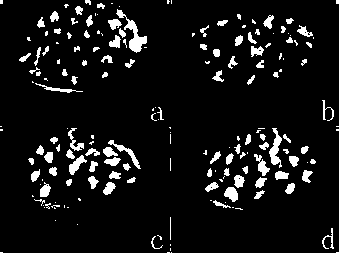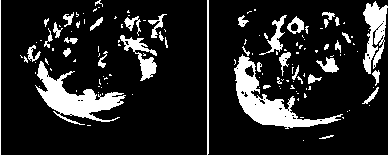Peanut breeding method of fast neutron irradiation combining with tissue culture
A tissue culture, fast neutron technology, applied in horticultural methods, botanical equipment and methods, plant regeneration, etc., can solve the problems of narrow genetic basis, selection of populations that cannot reach breeding, and inability to germinate and grow normally. Chimerism, the effect of avoiding chimerism
- Summary
- Abstract
- Description
- Claims
- Application Information
AI Technical Summary
Problems solved by technology
Method used
Image
Examples
Embodiment 1
[0033] The peanut breeding method of fast neutron irradiation combined with tissue culture described in the present invention comprises the following steps:
[0034] 1. Irradiation treatment
[0035] Select the full-grained Luhua No. 11 seeds (planted and preserved by Qingdao Agricultural University), and perform fast neutron irradiation treatment in China Institute of Atomic Energy. The irradiation energy is 14MeV, and the irradiation dose is 9.7Gy, 14.0Gy, 18.0Gy , with no irradiation as the control.
[0036] 2. Preparation of culture medium
[0037] (1) Preparation of induction medium: select MS as the basic medium, and add 2,4-D to this MS medium to form an induction medium. The amount of 2,4-D added is 12-15mg / L. In this embodiment, the induction medium is MS+12mg / L2,4-D+30g / L sucrose+8g / L agar; the pH of the induction medium is adjusted to 5.8, and the temperature in the culture room is 26~28°C, The cultivation is carried out under the condition that the light intens...
PUM
 Login to View More
Login to View More Abstract
Description
Claims
Application Information
 Login to View More
Login to View More - R&D
- Intellectual Property
- Life Sciences
- Materials
- Tech Scout
- Unparalleled Data Quality
- Higher Quality Content
- 60% Fewer Hallucinations
Browse by: Latest US Patents, China's latest patents, Technical Efficacy Thesaurus, Application Domain, Technology Topic, Popular Technical Reports.
© 2025 PatSnap. All rights reserved.Legal|Privacy policy|Modern Slavery Act Transparency Statement|Sitemap|About US| Contact US: help@patsnap.com



